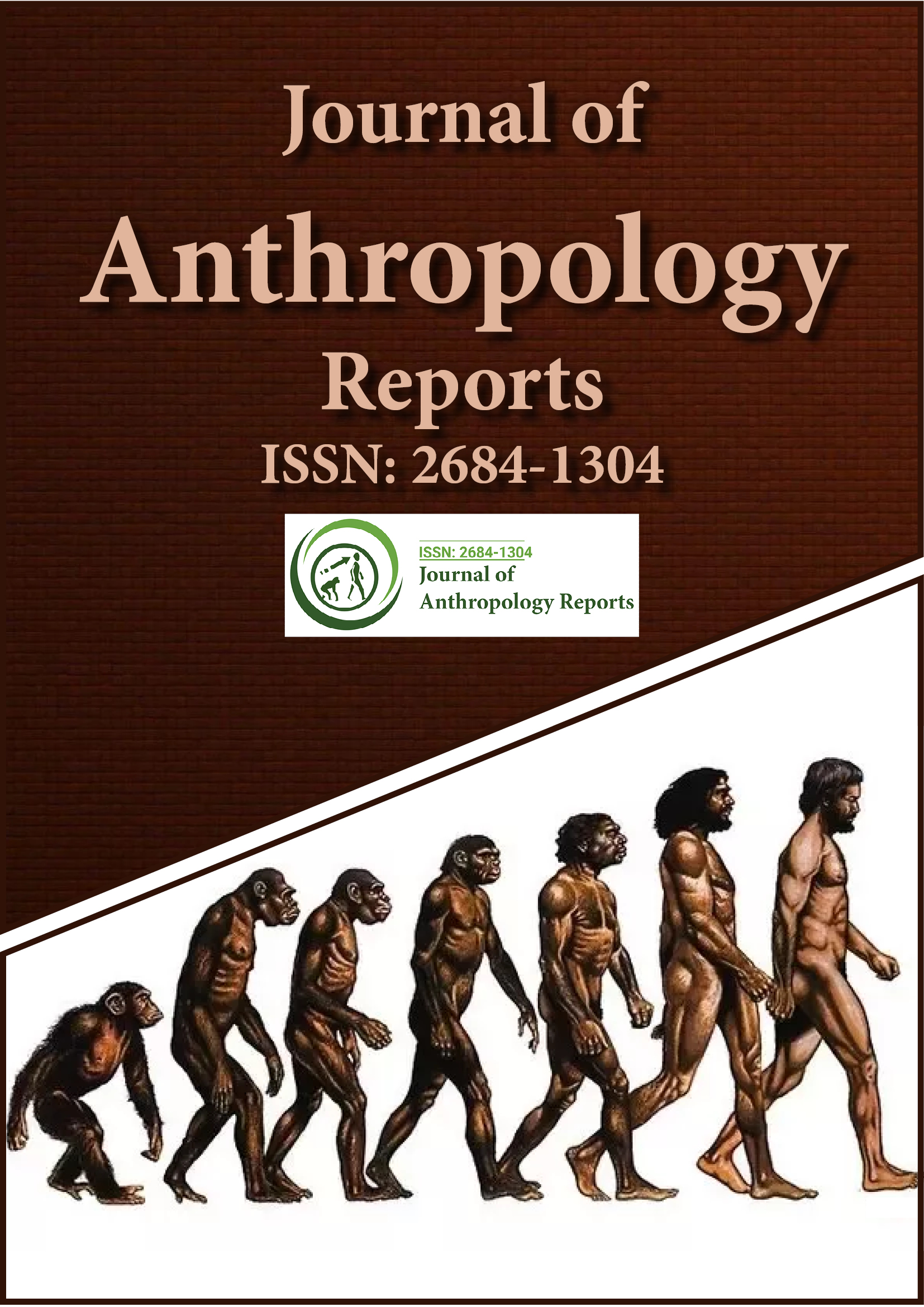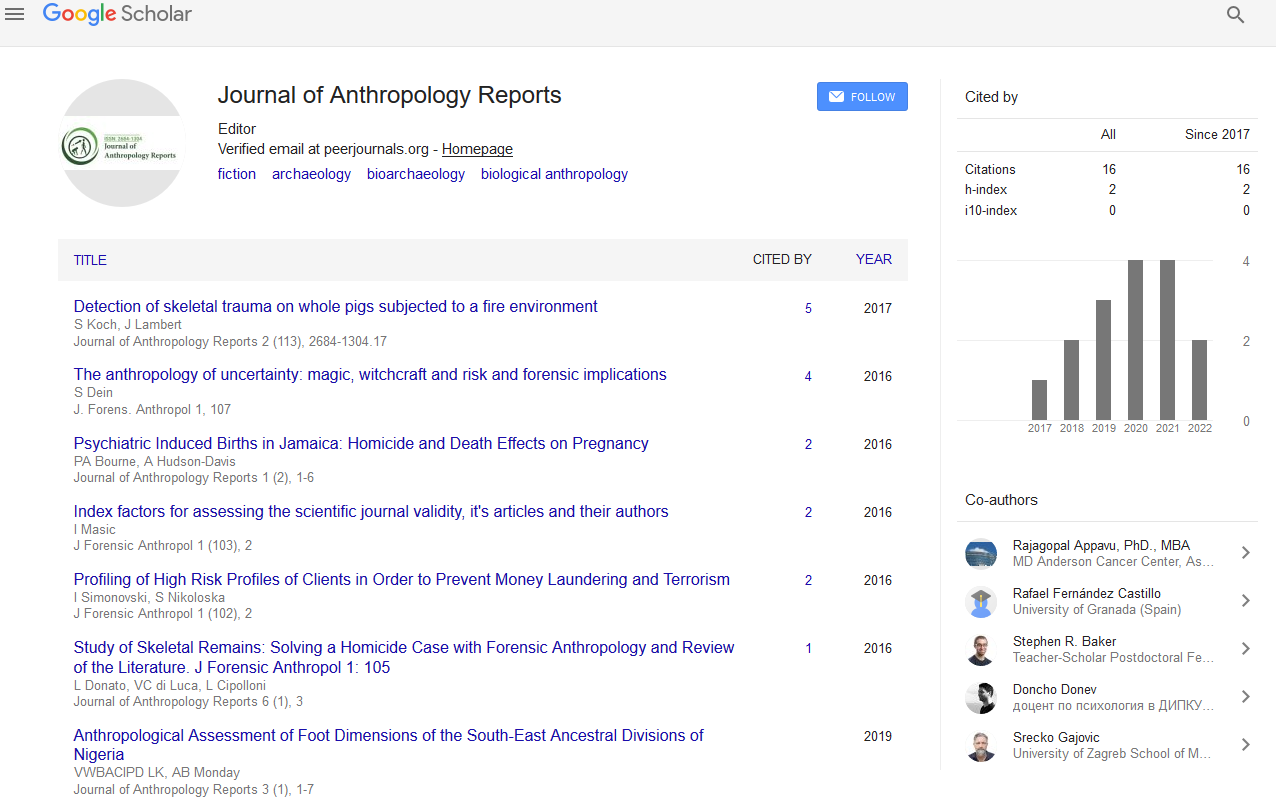Indexed In
- RefSeek
- Hamdard University
- EBSCO A-Z
Useful Links
Share This Page
Journal Flyer

Open Access Journals
- Agri and Aquaculture
- Biochemistry
- Bioinformatics & Systems Biology
- Business & Management
- Chemistry
- Clinical Sciences
- Engineering
- Food & Nutrition
- General Science
- Genetics & Molecular Biology
- Immunology & Microbiology
- Medical Sciences
- Neuroscience & Psychology
- Nursing & Health Care
- Pharmaceutical Sciences
Short Communication - (2023) Volume 6, Issue 1
Importance of Gender Lift in Anthropology
Leo Francis*Received: 01-Mar-2023, Manuscript No. JFA-23-19684; Editor assigned: 03-Mar-2023, Pre QC No. JFA-23-19684 (PQ); Reviewed: 20-Mar-2023, QC No. JFA-23-19684 (QC); Revised: 27-Mar-2023, Manuscript No. JFA-23-19684 (R); Published: 04-Apr-2023, DOI: 10.35248/2684-1304.23.6.150
Description
Genetic drift is an evolutionary mechanism characterized by random fluctuations in the frequency of specific versions of genes (alleles) within populations. Although it primarily affects small, isolated populations, the effects of genetic drift can be powerful, with traits becoming overwhelmingly common or disappearing from populations [1].
Genetic drift results from sampling errors inherent in the transmission of gametes by individuals within a finite population. The gamete pool of a generation and population is the total pool of eggs and sperm produced by individuals of that generation. If the gamete pool is infinitely large and there are no selections or mutations acting at loci with two alleles (A and a), then the proportion of gametes containing the A allele is exactly equal to the frequency of A and the proportion of gametes containing a equal to the frequency of a. Compare this situation to tossing a fair coin. If the toss a coin infinitely, the percentage of heads is 0.50 and the percentage of tails is 0.50 [2,3].
This deviation from the expected head and tail frequencies is due to sampling error. As more coins are tossed, these frequencies should approach 0.50. This is because the sampling error decreases as the sample size increases. In a finite population, adults of generation t pass on a finite number of gametes to produce offspring of generation t+1. Allele frequencies in this gamete pool are generally different from population frequencies in generation t due to sampling error (again assuming no locus selection) [4]. Thus, allele frequencies change in this population over time due to random events. That is, populations are subject to genetic drift. The smaller the population size (N), the more important the effect of genetic drift. In practice, the effective population size (Ne) should be considered when modeling drift effects. This is essentially the number of breeding individuals and may differ from the census size N under various scenarios such as gender inequality, particular mating structures, etc., and temporal variations in population size. At loci with multiple neutral alleles (alleles with identical effects on fitness), genetic drift results in fixing one of the alleles in the population with the loss of the others, heterozygosity is reduced. At any given time, the probability that one of these neutral alleles will eventually be fixed is equal to the frequency of that allele in the population.
The problem can be thought of in terms of populations replicated multiple times. Each population represents a population (subpopulation) within a meta population (a collection of populations). Given 10 finite demes with the same Ne, each with an initial frequency of the A allele of 0.5, 5 demes will eventually fix A and 5 demes will eventually lose A is expected [5]. Since we consider a finite number of demes, our observations may deviate somewhat from these expectations. Genetic drift thus eliminates genetic variation within a genogroup, but provides full differentiation between geno-groups through random changes in allele frequencies.
Conclusion
In the largest population, allele frequencies for each gene are relatively stable. This happens because there is no natural selection pressure on or against alleles, since genes do not affect fitness. In minimal populations, the frequencies of these genes vary greatly. Some are fixed within the population, others disappear. These random events that lead to frequency changes are called genetic drifts.
References
- Ruden DM, Cingolani PE, Sen A, Qu W, Wang L, Senut MC, et al. Epigenetics as an answer to Darwin’s “special difficulty,” Part 2: Natural selection of metastable epialleles in honeybee castes. Front Genet. 2015;6:60.
[Crossref] [Google Scholar] [PubMed]
- Boomsma JJ. Kin selection versus sexual selection: Why the ends do not meet. Curr Biol. 2007; 17(16):R673-R683.
[Crossref] [Google Scholar] [PubMed]
- Boomsma JJ. Lifetime monogamy and the evolution of eusociality. Philos Trans R Soc Lond B Biol Sci. 2009; 364(1533): 3191-3207.
[Crossref] [Google Scholar] [PubMed]
- Boomsma JJ. Beyond promiscuity: mate-choice commitments in social breeding. Philos Trans R Soc Lond B Biol. 2013; 368(1613): 20120050.
[Crossref] [Google Scholar] [PubMed]
- Gillespie JH. Population genetics: A concise guide. 2004.
Citation: Francis L (2023) Importance of Gender Lift in Anthropology. J Anthropol Rep. 6:150.
Copyright: © 2023 Francis L. This is an open-access article distributed under the terms of the Creative Commons Attribution License, which permits unrestricted use, distribution, and reproduction in any medium, provided the original author and source are credited.

